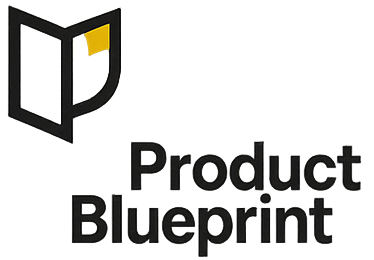Understanding Outcome-Oriented Planning
Outcome-oriented planning is all about aiming for what we want to achieve, not just ticking off tasks. This approach pushes us to create real value by zeroing in on results that actually matter.
What Is Outcome-Oriented Planning?
With outcome-oriented planning, we set our goals by defining the end results we want. We usually start by asking ourselves, “What does success look like?” and then work backward from there.
This way of planning puts outcomes front and center. We’re not just busy; we’re focused on the changes we want to make happen.
Instead of piling up to-do lists, we figure out which results will prove we’ve succeeded. Then we build our activities around reaching those outcomes.
For instance, it makes more sense to aim for “increase customer satisfaction by 15%” than to just “send 100 customer surveys.” The first one spells out what we really want.
Outcomes Versus Output: The Key Differences
Output means the things we produce or the tasks we finish. Outcomes are about the real results or changes that come from our work.
It’s easier to measure output—you can count emails sent or meetings held. But just counting stuff doesn’t prove we made a difference.
Outcomes tell us if our work actually mattered. They measure the impact.
Here’s how they stack up:
| Output | Outcome |
|---|---|
| 50 training sessions delivered | Employee skills improved by 25% |
| 200 marketing emails sent | Website traffic increased by 30% |
| 10 client meetings held | Client retention rate rose to 90% |
When we aim for outcomes instead of just output, we spend our time and resources way more wisely.
Value-Driven Versus Output-Driven Strategies
Output-driven strategies just focus on finishing tasks and delivering stuff. Success gets measured by how much we get done, not by what it accomplishes.
Value-driven strategies care about creating meaningful results. We look at whether our work brings positive changes to customers or stakeholders.
It’s easy for output-driven teams to stay busy all the time, but that doesn’t always lead to lasting value. They might check every box and still miss what really matters.
Value-driven teams ask, “Does our work solve real problems? Does it make things better for the people we serve?”
Planning around outcomes helps us keep our eyes on what counts. If our methods aren’t working, we can switch things up to get the results we want.
Establishing Clear Outcome Goals
Clear outcome goals zoom in on results that create value for the business and users. These goals should be measurable and tied directly to company success.
Defining Business Outcomes
Business outcomes cover the financial and strategic results that matter to leadership. They’re linked straight to revenue, growth, and our edge over competitors.
Revenue-focused outcomes might be things like raising annual recurring revenue by 25% or increasing customer lifetime value by $500 per user. For growth, maybe we’re aiming to expand market share by 15% or break into three new regions.
We always tie business outcomes to a time frame. A goal like “increase trial-to-paid conversion from 12% to 18% within six months” gives teams real direction and urgency.
Key business outcome categories:
- Revenue growth and profitability
- Market expansion and share
- Customer acquisition and retention
- Operational efficiency gains
Identifying Product Outcomes
Product outcomes are about how users interact with our product and what they get out of it. They bridge the gap between what users need and what the business wants.
User engagement outcomes could include boosting daily active users by 30% or cutting time-to-first-value from five days to two. For feature adoption, maybe we want 60% of users to try something new within 90 days.
Good product outcomes answer:
- How will user behavior change?
- What value will users receive?
- Which features matter most?
We need to connect product outcomes to business results. If we’re trying to raise trial-to-paid conversions, we have to know which product tweaks will actually make that happen.
Specifying Measurable Objectives
Measurable objectives turn fuzzy goals into targets we can track. Every objective should have a baseline, a target, and a way to measure it.
Strong objectives look like this:
| Element | Example |
|---|---|
| Baseline | Current trial-to-paid conversion: 12% |
| Target | Desired conversion rate: 18% |
| Timeline | Achieve by March 2026 |
| Measurement | Track weekly via analytics dashboard |
We use both leading and lagging indicators. Leading indicators hint at future success—like growing product engagement. Lagging indicators show the final results, such as conversion rates.
Avoid weak objectives that say things like “improve,” “enhance,” or “better.” Spell out the numbers and deadlines so teams know exactly what to chase and how to measure it.
Frameworks for Outcome Setting
Three frameworks help teams set outcomes that actually drive results. OKRs push us to set bold, measurable targets. SMART goals give us a way to structure our planning when we need more clarity.
Using OKRs Effectively
OKRs work best if we set about 3-5 objectives each quarter. Each one should have 2-4 key results, and those need to be measurable.
We write objectives that people remember and get excited about. They answer, “What do we want to achieve?” and give the team something to rally around.
Key results need to be specific and have deadlines. We check in on them every week to keep things moving.
Example OKR Structure:
- Objective: Improve customer satisfaction
- Key Result 1: Increase NPS score from 7 to 8.5
- Key Result 2: Reduce support ticket response time to under 2 hours
- Key Result 3: Achieve 95% customer retention rate
We review OKRs every week in our team meetings. If we fall behind, we talk about it and adjust during monthly check-ins.
The best OKRs stretch us a bit. If we hit 70%, we usually call that a win.
SMART Goals in Product Planning
SMART goals give us a checklist for product planning. Each goal has to pass five tests before we commit.
| SMART Element | What It Means | Example |
|---|---|---|
| Specific | Clear and focused | Launch mobile checkout feature |
| Measurable | Has numbers we can track | Increase mobile conversions by 25% |
| Achievable | Realistic with our resources | Based on current 15% conversion rate |
| Relevant | Supports business objectives | Aligns with revenue growth goal |
| Time-bound | Has a clear deadline | Complete by December 15, 2025 |
We test each goal against all five points. If one doesn’t fit, we revise before starting.
SMART goals are great for short-term projects—features, launches, or process tweaks.
Techniques to Align Teams with Objectives
We start alignment with simple, honest communication. Every team member should see how their work connects to the main objectives.
Cascade objectives from the company level down to individual tasks. Company goals become department goals, which then become team goals.
We hold alignment meetings every couple of weeks. These help us catch conflicts between priorities early.
Visual tracking tools keep everyone in the loop. We post progress charts where everyone can see them, and dashboards get updated daily.
Regular one-on-one chats help us spot alignment issues before they grow. We ask people to explain how their current work supports our objectives.
We make a point of celebrating wins that get us closer to our objectives. Recognition goes a long way in reinforcing good habits.
Integrating Outcomes Into Planning Cycles
Planning cycles work best when we focus on outcomes, not just activities. Whether it’s quarterly planning or roadmap planning, we need clear outcome targets to track progress and steer decisions.
Quarterly Planning with Outcomes
We build quarterly planning cycles around three to five key outcomes. Each one gets a clear metric and a target.
At the start of each quarter, we ask what we want to achieve—not just what we want to build. We write outcomes like “increase user retention by 15%” instead of vague statements like “improve the dashboard.”
Quarterly Outcome Planning Steps:
- Define 3-5 measurable outcomes
- Set specific target numbers
- Assign outcome owners
- Break outcomes into monthly milestones
- Schedule weekly progress reviews
We track progress every week in short meetings. The owner of each outcome reports the latest numbers and any blockers. This keeps everyone focused on results.
If we’re falling behind on outcomes, we change our approach right away. That might mean tweaking features, shifting resources, or adjusting timelines. The main thing is to stay flexible but keep the outcome goal steady.
Roadmap Alignment Strategies
Our roadmap planning cycles usually cover six to twelve months. We organize roadmaps by outcome themes instead of just listing features.
Each theme ties back to business goals. For example, a “Customer Growth” theme could include outcomes for new user signups and trial conversions.
Roadmap Alignment Framework:
| Theme | Primary Outcome | Secondary Outcomes | Timeline |
|---|---|---|---|
| Customer Growth | 25% new signups | 15% trial conversion | Q1-Q2 |
| Product Quality | 40% fewer bugs | 20% faster load times | Q2-Q3 |
We check roadmap alignment every month. This keeps our quarterly planning cycles tied to long-term goals. If business priorities shift, we update the roadmap themes first, then adjust quarterly outcomes.
Cross-functional teams review each theme every quarter. They look at progress and suggest changes for the next planning cycle.
Prioritizing Initiatives Based on Outcomes
Smart teams rank their work by looking at which projects will create the most value. Before building anything, we connect each planned feature to a business goal.
Assessing Value of Product Initiatives
Comparing projects gets tricky without a clear method. Always start by asking what problem each initiative really solves for users.
Create a scoring system that rates initiatives on three factors:
- Impact on key metrics
- Resources needed
- Time to complete
Keep it simple: use a 1-10 scale for each factor. Since results matter most, multiply impact by 2. Add up the scores for a quick comparison.
| Initiative | Impact (x2) | Resources | Timeline | Total Score |
|---|---|---|---|---|
| Feature A | 16 | 7 | 8 | 31 |
| Feature B | 12 | 9 | 6 | 27 |
Test your assumptions before you commit. Try small experiments or run a few user interviews. It’s a lot better than building something that sounds good but flops in practice.
Put your focus on initiatives that actually move your main business metrics. Revenue, user growth, and retention usually matter way more than vanity stats like page views.
Connecting Features to Objectives
Every feature should connect to a real objective. If it doesn’t, maybe it’s not worth building.
Map each feature to specific outcomes using this format:
- Feature name
- Target metric
- Expected change
- Success criteria
Say you’re working on a search filter. You might target conversion rate, aiming for a 15% boost within 30 days.
Write outcome statements that explain the reason behind each feature. For example: “We’re building smart notifications so users complete 25% more tasks per week.” This helps teams stay focused on impact, not just shipping stuff.
Track progress every week using your chosen metrics. If a feature isn’t making a difference after launch, try to improve it—or maybe just move on.
Measuring and Tracking Outcome Achievement
Tracking progress means you need clear metrics and regular check-ins. Set up systems that actually measure what matters to your goals.
Key Metrics and KPIs
Pick metrics that tie straight to the outcomes you want. Revenue growth, customer satisfaction, and cost reduction work a lot better than just counting activity.
Outcome-focused metrics show if you’re creating real value:
- Customer retention rates
- Net profit increases
- Time saved on key processes
- Quality improvement scores
Track leading and lagging indicators together. Leading indicators give you a hint about future success. Lagging indicators show what actually happened.
| Metric Type | Example | Why It Matters |
|---|---|---|
| Leading | Pipeline growth | Shows future potential |
| Lagging | Revenue increase | Confirms actual results |
Set specific targets for each metric. Instead of “improve customer satisfaction,” try “increase satisfaction scores from 7.2 to 8.5 within six months.”
Continuous Value Assessment
We need regular check-ins to see if our outcomes still matter. Business needs change fast.
What seemed important six months ago might not drive value today.
Let’s schedule monthly reviews of our key metrics. It’s better to look at trends, not just single data points.
Three months of steady improvement tells us more than one good week ever could.
During reviews, ask yourself:
- Are we measuring the right things?
- Do our targets still match business needs?
- What obstacles are blocking progress?
When the data points to problems, let’s adjust our approach. If customer satisfaction isn’t improving, maybe it’s time for new tactics or even better metrics.
Share progress updates with stakeholders every quarter. Clear reports help everyone stay focused on delivering real value, not just checking off tasks.





